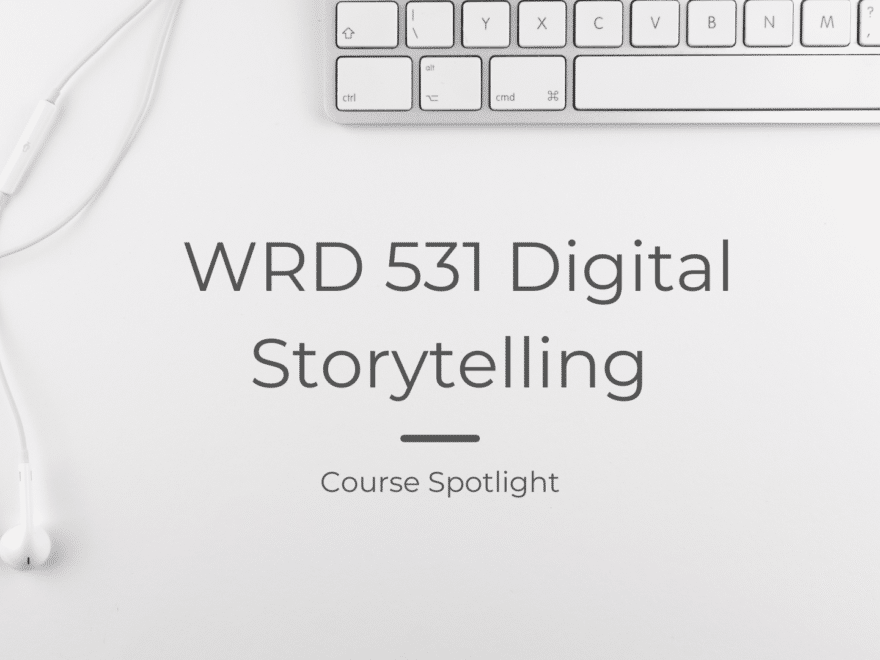Winter Quarter came and went, but we are taking a look back at one of the (seemingly) non-traditional WRD courses, WRD 531 Digital Storytelling, taught by Professor Lisa Dush. This course offered a multimodal lens on storytelling and writing, abilities I did not see as so crucial to a writer’s skill set until now.
Digital Storytelling used two main projects to teach the students how, why, and when to use a digital story (and it was particularly encouraged to make your projects non- profit focused.) The project that closed the class was more analytical: combining with Lisa’s own research, students looked at how organizations tell stories and if/when they utilize digital ones. There is no one way to tell a story, but the situation can call for a more effective method, so I was able to parse out some commonalities of NPO storytelling (such as the heavy use of personal narrative and coalition building techniques.)
The project that kicked off the course was much more involved. Students made their own digital stories based on a life event/person/moment that was significant to them. I thought picking the moment would be the most difficult part–and it was somewhat. I have not lived a particularly momentous life, but that does not mean I did not have a story to tell. I wanted to write about my families’ cross-country move but was not sure how to frame it. Lisa assured us that a story can come out of any moment, and it is our job as writers to lengthen even a few seconds into a whole detailed story worthy of telling.
Each student really ran with their ideas, producing a large variety of stories from their first time having to report to CPS as a teacher (Caroline), the life and death of their cousin (Stephany), a mother-daughter relationship as told through lumpia cooking (Jazmine), and many more. Each story was more well done than I had expected of a classroom full of writers. Each student was able to take a moment in their life and create a visually appealing story that taught a lesson bigger than the moment led on.
I still struggled with how to tell the story of my move. I wanted to express my tenderness and love for my home and family that I was lucky enough to have for 20+ years, but still Lisa emphasized that stories are not always obvious. I looked at the week of the move moment by moment, trying to find a story in all the memories of boxes. For some reason, I was stuck on my most embarrassing memory – losing my baby blanket the night before all the boxes were to be shipped. While it was a story I did not particularly want to tell, I felt like I had to.
There was vulnerability in the moment, something many of my stories seemed to lack, and with the right encouragement and story shaping with Lisa, I knew it was important to tell (even if just important for me.) My video editing skills got a great workout. Thanks to WeVideo, a much less daunting editing tool than Adobe, students were able to help each other along the way with peer review groups. There were always eyes on the videos, and minds workshopping their scripts. While my new audio-visual editing skills are the most practical skill I took away from that course, the most important lesson was learning the scope of stories and seeing that the smallest, most innocuous moment can be shaped into a beautiful narrative. Writing is much more encompassing of all media than I originally thought, and Digital Storytelling helped broaden my skills and understanding of this genre, while also improving my story telling skills as a whole.
